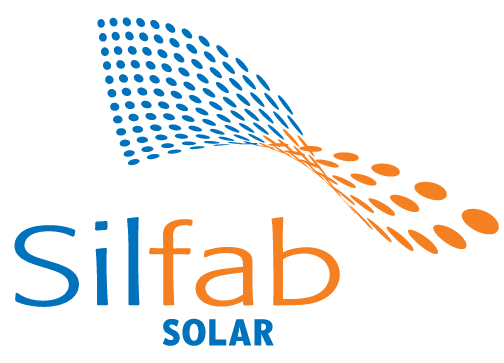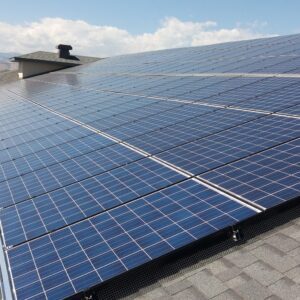 As solar energy continues to become more pervasive across society, being adopted on a wider scope at both the consumer and industrial levels, its uses and users expand by the day. In a convergence of cutting-edge solar technology and an innovative, boundary-pushing company, Google has recently announced its plans to power a new data center in the Netherlands exclusively with the electricity harnessed by a local Dutch solar farm.
By partnering with Eneco, a prominent energy provider in the Netherlands, Google will be using a clean, renewable source of unlimited energy for at least the coming decade. The new data center, housing thousands of servers to extend Google’s reach into the European marketplace, is innovative in every sense of the word, from the center’s physical design to its adoption of clean energy.
The Dutch data center is a part of the company’s commitment to drive its many different facets of operations exclusively on renewable energies by the end of 2017. To that end, Google is currently the world’s largest corporate buyer of renewable energy, now reaching 2.6 gigawatts of total renewable power between wind and solar energy providers.
As solar energy continues to become more pervasive across society, being adopted on a wider scope at both the consumer and industrial levels, its uses and users expand by the day. In a convergence of cutting-edge solar technology and an innovative, boundary-pushing company, Google has recently announced its plans to power a new data center in the Netherlands exclusively with the electricity harnessed by a local Dutch solar farm.
By partnering with Eneco, a prominent energy provider in the Netherlands, Google will be using a clean, renewable source of unlimited energy for at least the coming decade. The new data center, housing thousands of servers to extend Google’s reach into the European marketplace, is innovative in every sense of the word, from the center’s physical design to its adoption of clean energy.
The Dutch data center is a part of the company’s commitment to drive its many different facets of operations exclusively on renewable energies by the end of 2017. To that end, Google is currently the world’s largest corporate buyer of renewable energy, now reaching 2.6 gigawatts of total renewable power between wind and solar energy providers.
- Home
- Residential
- Commercial
- Tesla
- Testimonials
- About Us
- Contact Us
Category: Solar Panels
 As solar energy continues to become more pervasive across society, being adopted on a wider scope at both the consumer and industrial levels, its uses and users expand by the day. In a convergence of cutting-edge solar technology and an innovative, boundary-pushing company, Google has recently announced its plans to power a new data center in the Netherlands exclusively with the electricity harnessed by a local Dutch solar farm.
By partnering with Eneco, a prominent energy provider in the Netherlands, Google will be using a clean, renewable source of unlimited energy for at least the coming decade. The new data center, housing thousands of servers to extend Google’s reach into the European marketplace, is innovative in every sense of the word, from the center’s physical design to its adoption of clean energy.
The Dutch data center is a part of the company’s commitment to drive its many different facets of operations exclusively on renewable energies by the end of 2017. To that end, Google is currently the world’s largest corporate buyer of renewable energy, now reaching 2.6 gigawatts of total renewable power between wind and solar energy providers.
As solar energy continues to become more pervasive across society, being adopted on a wider scope at both the consumer and industrial levels, its uses and users expand by the day. In a convergence of cutting-edge solar technology and an innovative, boundary-pushing company, Google has recently announced its plans to power a new data center in the Netherlands exclusively with the electricity harnessed by a local Dutch solar farm.
By partnering with Eneco, a prominent energy provider in the Netherlands, Google will be using a clean, renewable source of unlimited energy for at least the coming decade. The new data center, housing thousands of servers to extend Google’s reach into the European marketplace, is innovative in every sense of the word, from the center’s physical design to its adoption of clean energy.
The Dutch data center is a part of the company’s commitment to drive its many different facets of operations exclusively on renewable energies by the end of 2017. To that end, Google is currently the world’s largest corporate buyer of renewable energy, now reaching 2.6 gigawatts of total renewable power between wind and solar energy providers.
5 Technologies That Make Green Living Easy
Written by goldensolar on . Posted in Green Living, Solar Panels, Solar Power. Leave a Comment
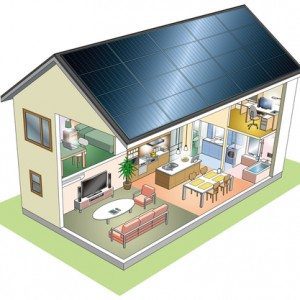 Who doesn’t want to contribute to a clean planet? Since the “Save the Planet” phase decades ago, the idea has morphed into a solid part of our global way of life. Solar panels on someone’s roof aren’t a novelty anymore; they have become everyday sightings.
Who doesn’t want to contribute to a clean planet? Since the “Save the Planet” phase decades ago, the idea has morphed into a solid part of our global way of life. Solar panels on someone’s roof aren’t a novelty anymore; they have become everyday sightings.
Why Green Living?
So, are we really pulling off this “green living” thing? With the help of the solar panel industry, which is constantly innovating and improving, pulling energy from the sun to power our homes is not only possible but is becoming more commonplace and affordable. The average household in the United States uses around 901 kilowatt hours of electricity per month, according to the US Energy Information Administration. We also use an average of about 400 gallons of water a day, some of it heated. If your home functions from a green point of view, installing at least some of the current technologies can make life so much easier.Green Technology for the Home
Technology is a beautiful thing. Whether you’re into green living 1000 percent or you just want to dabble a bit here and there, there’s an array of technological devices available to help you make your home more eco-friendly.- Solar Panel Array. Today’s solar panels aren’t the monstrosities that haunted our rooftops in the 1970s. Modern solar panels are efficient and compact and can fit seamlessly into your home’s aesthetic.
- Solar Hot Water Heater. A conventional water heater uses natural gas or electricity to heat the water for your morning shower. If you’re pulling power off the grid, that’s money down the drain. A solar hot water heater can use energy collected from your solar panels to heat the water you need.
- Rain Barrels. Whether you’re growing flowers for decoration or food for the family table, you’re not growing much without watering. For outdoor water use, a rain barrel or two makes for a fantastic irrigation system that doesn’t cost you to refill.
- Backyard Wind Turbine. If you live in an area where wind turbines are feasible, having one in your backyard can supplement your solar panels as your home’s energy source.
- Programmable Thermostat. Not only are programmable thermostats economically a good idea, they can make controlling your home’s internal temperature a stress-free affair. You can set it to control your home’s HVAC to the settings your family prefers. This can stretch your solar energy even further.
The Truth About Tesla’s Solar Roof
Written by goldensolar on . Posted in Solar Panels. Leave a Comment
 Elon Musk has always been considered a genius when it comes to envisioning new technology. The knock against Musk is that he has always had issues bringing that technology to life and making it practical for everyone. His company Tesla puts out electronic cars that are not affordable enough for the general public, and his space travel company Space X only caters to billionaires.
When Tesla announced a few years ago that it was going to change the residential housing market with its new solar roofing panels, there were a lot of skeptics. But it looks like Musk and Tesla may have a home run with this new roofing product, and Musk may finally be recognized as the innovator he has always tried to be.
Elon Musk has always been considered a genius when it comes to envisioning new technology. The knock against Musk is that he has always had issues bringing that technology to life and making it practical for everyone. His company Tesla puts out electronic cars that are not affordable enough for the general public, and his space travel company Space X only caters to billionaires.
When Tesla announced a few years ago that it was going to change the residential housing market with its new solar roofing panels, there were a lot of skeptics. But it looks like Musk and Tesla may have a home run with this new roofing product, and Musk may finally be recognized as the innovator he has always tried to be.
What Are Solar Roofing Panels?
Solar roofing panels are solar energy collection devices made of smoothed glass and shaped to look like standard roofing tiles. An entire solar roof from Tesla comes complete with a battery storage system and a power distribution element. A solar roof is meant to replace the need to buy electricity from the local utility or at least cut down on the need for grid electricity significantly. Tesla is making a wide variety of tiles that mimic the current array of asphalt, wood and clay tiles to give consumers a common frame of reference. In a bold move, Tesla is offering a lifetime warranty on their solar roofs that is good for the life of your home – or infinity. Tesla does not state whether the warranty is transferable from one homeowner to the next.Why Are People Talking About Solar Roofs?
If Tesla does allow the solar roof warranty to be transferred from one owner to the next, then that could be a significant selling point for any homeowner. Solar roofs, as with any other type of solar installation in a residential setting, are expected to raise property values considerably, and a transferable lifetime warranty only makes the deal sweeter. A big reason why solar roofs are getting so much attention is because they are said to be, in the long run, more affordable than standard roofs. As an example, covering a 2,000-square-foot home in New York State with a solar roof would cost around $50,000. As with many solar products, solar roofs come with tax investment credits that make the product less expensive. In a span of 30 years (the course of a normal mortgage), that roof will generate approximately $64,000 in electricity. That number works out to around $178 per month in electricity costs, which can seem high in any part of the country. But if you convert your entire home to electricity, from the furnace to the central air system, then you would recognize an incredible savings on your energy costs.How Is The Solar Roof Changing The Residential Roofing Industry?
You would think that a roof with a lifetime warranty would be making residential roofing contractors nervous, but the solar roof still has some hurdles to get over before it becomes widely used. For one thing, the entire roof is not made of solar panels, which means that the consumer will have to pay to have expensive glass tiles installed to give their roof a consistent look. A solar roof is the next step in alternative energy products, and the Tesla roof is only the first entry in that arena. The introduction of the Tesla solar roof is an indication to residential roofing contractors that the market is shifting, and contractors will need to do their homework on solar products if they want to stay competitive. As with his other ventures, Musk has once again created a product that is only accessible to people with considerable financial means. While that is a nice market to work in, it does limit your possibilities for growth. This is especially true when your product carries a lifetime warranty. The post The Truth About Tesla’s Solar Roof appeared first on Golden Solar.10 Benefits of Solar Energy
Written by goldensolar on . Posted in Solar Panels, Solar Power. Leave a Comment
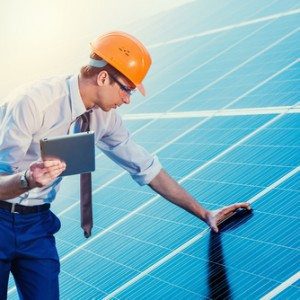 The number of solar panel installations has increased over the past couple of years, owing to various improvements in solar technology and increased sensitization on the benefits of solar energy. Below is a brief look at the top benefits of switching to solar.
The number of solar panel installations has increased over the past couple of years, owing to various improvements in solar technology and increased sensitization on the benefits of solar energy. Below is a brief look at the top benefits of switching to solar.
1. Increase the Value of Your Home/Building
Home buyers and tenants understand that a building structure fitted with a solar power system translates to lower energy bills. In addition, they know that solar energy is environmental friendly. Hence, solar panels are likely to make your home more attractive on the property market.2. Save on Energy Bills
Switching to solar energy enables you to significantly cut your energy bills. As such, you are able to save hundreds of dollars from your regular electricity bills.3. Renewable Energy Source
Solar is a renewable source of energy. Unlike fossil fuels, which run out after some time, you won’t have to worry about sunlight ever running out.4. Government Incentives
You can benefit from a wide range of incentives offered by both state and local government when you install solar panels. An example is the lifting of the $2,000 cap on Federal Solar Tax Credit, which enables you to claim back 30% of the total cost of equipment and installation of your solar power system. Other incentives include Solar Renewable Energy Credits (SRECs) and tax rebates. All these incentives combined can enable you cut the cost of switching to solar by almost half.5. Predictable Energy Costs
Solar power has a distinct advantage over mains electricity in that you no longer have to worry about fluctuating energy bills. Electricity bills have been on the increase over the years, with power companies blaming the fluctuations on several factors such as variations in oil prices, forex adjustment etc. Solar energy is not affected by any such factors. Hence, you can be sure that you have made a secure investment by installing solar panels.6. Environmental Friendly
Solar power systems reduce the environmental impact caused by non-renewable energy sources. Solar panels produce clean electricity – reducing carbon dioxide emissions and effectively lowering the carbon footprint.7. Energy Independence
Reliance on petroleum has brought about numerous challenges to the economy since a good percentage of the crude oil has to be imported. Solar energy eliminates this dependence on foreign energy.8. Scalability
Solar panel installations can be scaled to fit different applications. Apart from the residential solar power systems, you can find solar panel configurations and options to fit commercial applications such as office or industrial complexes, educational institutions, and government agencies.9. Solar Financing Options
Solar panel installation can be financed in two major ways, either solar leasing or solar purchase power agreements (PPAs). As a homeowner, you can choose the option that works best for you in order to switch to solar for little or no money down.10. Reliability
Solar panel systems are very durable and reliable. You don’t have to worry about repair or replacement costs, apart from the occasional maintenance.Use Solar Energy to Earn a LEED Certification
Written by goldensolar on . Posted in Solar Panels, Solar Power. Leave a Comment
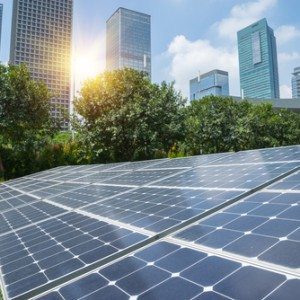 Solar is one of the renewable energy strategies that can earn you LEED certification. Among the various LEED system rating categories, solar falls under the “Energy & Atmosphere” category. By implementing solar power system strategies in your home or business, you stand to gain up to 8 LEED points under the “On-Site Renewable Energy” (EA Credit 5) credit. The number of LEED points earned is dependent on the percentage of energy costs that you have managed to offset through your on-site renewable energy initiatives. The calculation is basically the percentage of energy produced by renewable energy systems compared to the total annual energy cost in your building.
Solar is one of the renewable energy strategies that can earn you LEED certification. Among the various LEED system rating categories, solar falls under the “Energy & Atmosphere” category. By implementing solar power system strategies in your home or business, you stand to gain up to 8 LEED points under the “On-Site Renewable Energy” (EA Credit 5) credit. The number of LEED points earned is dependent on the percentage of energy costs that you have managed to offset through your on-site renewable energy initiatives. The calculation is basically the percentage of energy produced by renewable energy systems compared to the total annual energy cost in your building.
Why Should Your Building Be LEED Certified?
The realization that buildings cause significant environmental degradation has driven construction and other real estate professionals to shoulder the responsibility of mitigating some of the risks. The Leadership in Energy and Environmental Design (LEED) rating system was developed by the United States Green Building Council (USGBC) to provide guidelines that promote the use of renewable resources such as solar panel systems in order to reduce the damage caused to the environment by buildings. LEED certification encourages the use of energy-efficient lighting and HVAC systems, as well as other energy conservation and management efforts that lower the amount of electricity utilized in buildings. Some of the on-site renewable energy technologies that can earn you valuable LEED points include: Solar thermal power systems, solar photovoltaic panels, tidal/wave systems, biogas/biomass systems, geothermal systems, and wind turbines.The Growth of Solar Energy Systems
The use of solar PV arrays has over the years grown from the basic residential applications to more complex commercial applications. As such, it is commonplace to find solar panel installations in many different types of building structures including office buildings, industrial complexes, government agencies, institutions of learning etc. Implementing solar energy systems goes a long way to achieve some of the goals of LEED such as:- Helping to effectively reduce the level of carbon emissions
- Enhancing the quality of air
- Eliminating the dependence on non-renewable energy sources
- Helping real estate developers to make better building decisions
Benefits of Implementing Solar Power Systems
The benefits of installing solar panels or any other form of on-site renewable energy in your building do not end with achieving LEED certification only. There are additional benefits of installing solar systems such as:- Reduction of the environmental impact caused by reliance on non-renewable energy sources
- You get to enjoy a wide range of incentives from government for implementing renewable energy
- A significant drop in power bills since you don’t have to rely on electricity from the grid only
- You can attract visitors and/or tenants who are environmentally conscious to your building
- You can cushion yourself from the ever rising energy bills since the cost of solar energy does not fluctuate





